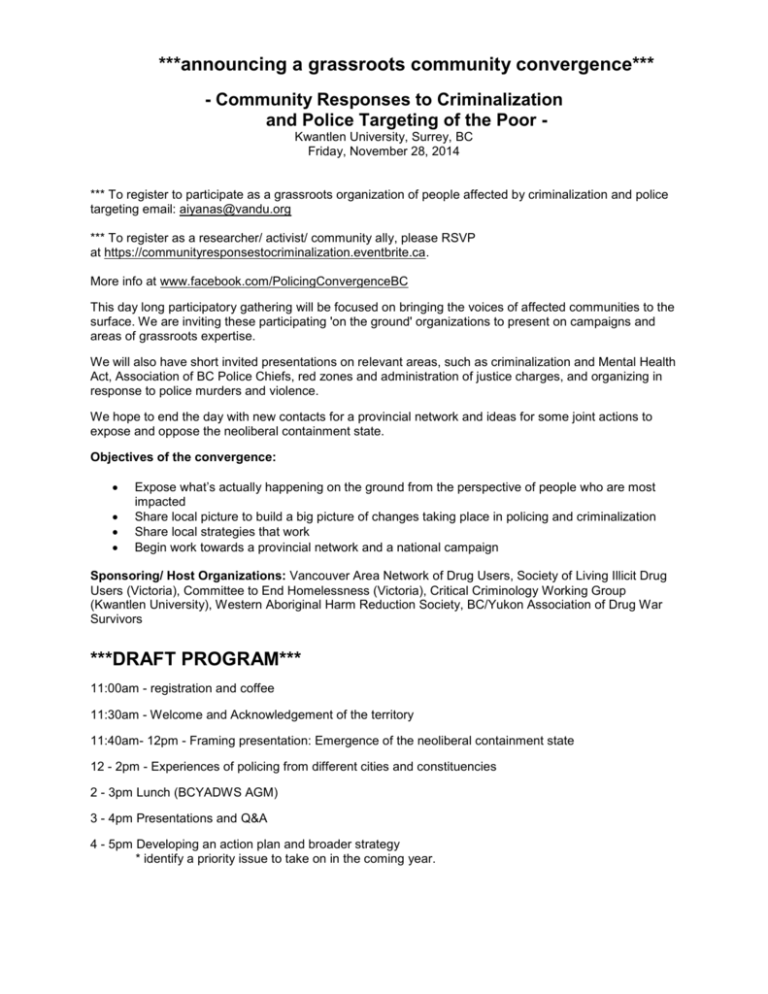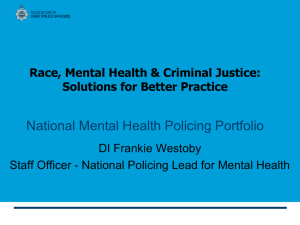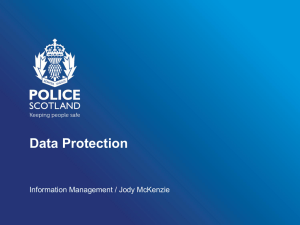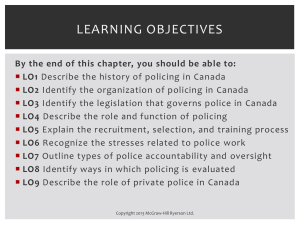Nov 2014
advertisement

***announcing a grassroots community convergence*** - Community Responses to Criminalization and Police Targeting of the Poor Kwantlen University, Surrey, BC Friday, November 28, 2014 *** To register to participate as a grassroots organization of people affected by criminalization and police targeting email: aiyanas@vandu.org *** To register as a researcher/ activist/ community ally, please RSVP at https://communityresponsestocriminalization.eventbrite.ca. More info at www.facebook.com/PolicingConvergenceBC This day long participatory gathering will be focused on bringing the voices of affected communities to the surface. We are inviting these participating 'on the ground' organizations to present on campaigns and areas of grassroots expertise. We will also have short invited presentations on relevant areas, such as criminalization and Mental Health Act, Association of BC Police Chiefs, red zones and administration of justice charges, and organizing in response to police murders and violence. We hope to end the day with new contacts for a provincial network and ideas for some joint actions to expose and oppose the neoliberal containment state. Objectives of the convergence: Expose what’s actually happening on the ground from the perspective of people who are most impacted Share local picture to build a big picture of changes taking place in policing and criminalization Share local strategies that work Begin work towards a provincial network and a national campaign Sponsoring/ Host Organizations: Vancouver Area Network of Drug Users, Society of Living Illicit Drug Users (Victoria), Committee to End Homelessness (Victoria), Critical Criminology Working Group (Kwantlen University), Western Aboriginal Harm Reduction Society, BC/Yukon Association of Drug War Survivors ***DRAFT PROGRAM*** 11:00am - registration and coffee 11:30am - Welcome and Acknowledgement of the territory 11:40am- 12pm - Framing presentation: Emergence of the neoliberal containment state 12 - 2pm - Experiences of policing from different cities and constituencies 2 - 3pm Lunch (BCYADWS AGM) 3 - 4pm Presentations and Q&A 4 - 5pm Developing an action plan and broader strategy * identify a priority issue to take on in the coming year. ***CONCEPT PAPER*** Policing in BC’s communities has hit a critical point. Policing has become the frontline response to rising poverty and related social ills for B.C. municipalities [1][2][3]. Twenty years of neoliberal economic policies at the federal and provincial levels have severed core social services and supports, effectively offloading these responsibilities onto municipalities [4] and pushing low-income communities into an intensifying state of crisis [5]. Municipalities have responded in line with their traditional jurisdictional powers by focusing on policing and bylaws governing streets and parks to regulate and contain poverty, marked by police budgets that continue to rise despite a falling ‘crime rate.’ This criminalization of the poor at the municipal level is supported at the provincial level by an expansion of prison capacity and increasing numbers of people in remand, especially on ‘administration of justice’ and drug related charges, and at the federal level by ‘tough on crime’ mandatory minimum legislation. Our communities are being ‘mined’ for crime, a resource used to justify rising police budgets and a growing prison-industrial complex. It is clear that police are the wrong people to be dealing with people living in poverty and yet assertive forms of police control have long defined the municipal response to poverty and continue to do so even in the era of therapeutic jurisprudence and community courts. Many police forces in the province use a ‘proactive’ policing approach where police stop and frisk residents of low-income communities to aggressively enforce conditions of bail and probation. Empirical research and lower court rulings have found that bail conditions are often unreasonable, over-broad, overly restrictive, and generally set the accused up to fail[6][7]. Despite these concerns, poor people, indigenous people, people of colour and people who use illicit drugs are routinely burdened with complex and burdensome bail orders, pushing legally innocent people around (or out of) the city, increasing their chances of incarceration, and undermining their right to reasonable bail. A few years ago remand inmates only accounted for one third of the incarcerated population in the province [9]. Currently more than half the province’s inmates are held without trial in overcrowded, understaffed, and expensive remand centres where they receive no supportive programming, limited access to legal aid, and are subjected to conditions that even upper court judges and federal commissions describe as “onerous” and “more restrictive…than many institutions which house the convicted”[7]. Communities are in a deadlock. Communities are forced to pay for services that are completely inappropriate to our needs and, despite footing the entire bill, have very limited control over the police who are supposed to serve us. One problem is that the Police Act identifies authority over policing as a provincial right but the funding of municipal police forces as a municipal obligation. The majority of members of a police board are nominated by the province with no consultation within the community, while (with the exception of Vancouver) BC municipalities have very little ability to direct or set limits to police budgets. Community oversight needs to be foundational to policing in the province, not an afterthought. If police services are to be accountable to the communities being served, it is essential that communities with the most direct contact and experience with policing have strong and meaningful representation as part of this oversight. It’s time for communities within BC to push back Marginalized communities across Canada continue to resist this hyper-incarceration agenda, analyze their own experiences of being targeted by the police, envision alternative practices, and assert their rights against the tightening mesh of control on low-income communities that is creating a deadly symbiosis between disinvested in communities and a growing penal system. There is an urgent need to link the local resistances to these policies of criminalization in different BC municipalities, and to build a regional network of organizations capable of demanding effective changes to ensure policing is meeting the needs of the communities being served. We need to build political power to reign in the police, and to prevent the mining of our communities to justify the increased allocation of resources to policing, incarceration and a growing prison-industrial complex. Below are just a few of the issues that need to addressed: ● Local tactics for resisting social profiling, discrimination, and abuse ● Disarming the police ● Exclusion of police from poverty-related issues, and re-direction of funds towards community support workers. ● Community control over police boards, including representation among those who are most impacted by policing ● Community monitoring of policing, access to police records, appropriate tracking mechanisms, appropriate funding for monitoring ● Resisting the federal mass incarceration agenda ● Creating a strong regional network Citations: [1] Canadian Mental Health Association. Police and Mental Illness: Increased Interactions., 2005. [2] Gaetz, Stephen, and Bill O’Grady. The Missing Link: Discharge Planning, Incarceration and Homelessness. Toronto, ON: John Howard Society of Ontario, 2007. [3] Ley, David, and Nicholas Lynch. Divisions and Disparities in Lotus-Land: Socio-Spatial Income Polarization in Greater Vancouver, 1970-2005. N. p., 2012. Print. [4] DeBeck, Kora et al. “Canada’s New Federal ‘National Anti-Drug Strategy’: An Informal Audit of Reported Funding Allocation.” International Journal of Drug Policy 20.2 (2009): 188–191. ScienceDirect. Web. 12 Sept. 2013. [5] Vila-Rodriguez, Fidel et al. “The Hotel Study: Multimorbidity in a Community Sample Living in Marginal Housing.” American Journal of Psychiatry 170.12 (2013): 1413–1422. Silverchair. Web. 15 Jan. 2014. [6] Sprott, Jane B., and Nicole M. Myers. “Set Up to Fail: The Unintended Consequences of Multiple Bail Conditions.” Canadian Journal of Criminology and Criminal Justice 53.4 (2011): 404–423. AND Myers, Nicole M., and Sunny Dhillon. “The Criminal Offence of Entering Any Shoppers Drug Mart in Ontario: Criminalizing Ordinary Behaviour with Youth Bail Conditions.” Canadian Journal of Criminology and Criminal Justice 55.2 (2013): 187–214. AND Simon, Paula. “Simons: Radical Ruling on Bail Redefines What’s Reasonable.” Edmonton Journal 13 Dec. 2013. [7] See: Trotter, Gary. The Law of Bail in Canada Carswell 1992. AND Chasse, Ken. “Untruth In Sentencing Credit for Pre-Sentence Custody.” Canadian Criminal Law Review 15.1 (2010): 75–109 [8] Calzavara, L. et al. (2007). Prevalence of HIV and hepatitis C virus infections among inmates of Ontario remand facilities. Canadian Medical Association Journal. Vol 177. [9] Cowper, Geoffrey. A Criminal Justice System for the 21st Century. Ministry of Justice, 2012. BC Justice Reform Initiative p38.









